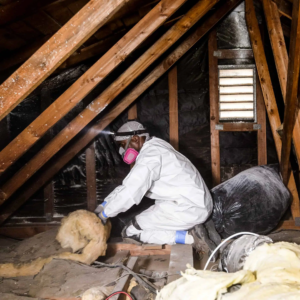Men often sing improvised barbershop harmony at picnics, parties and minstrel shows. When the printing press was adapted to produce musical notation, the barbershop idiom was refined and codified.
The barbershop is close, four-part a cappella singing with rich chords and ringing notes. It also has special performance practices that take time to learn for singers from the choral world. Click www.iam.salon/st-george-barber-shop to learn more.

Barbershop is vocal music sung a cappella in four parts, bass, lead, baritone and tenor. It is always sung in unison and has a melody voiced by the second highest part, called “lead.” The other three voices provide harmony above and below that melody. For many barbershop singers, the harmony is as much a part of the song as the melody itself. The four part singing is characterized by ringing chords, rich harmonies and expressive intonation. It is a style that has evolved over the years from simple songs harmonized strictly by ear (“woodshedding”) to elaborate productions with synchronized movements, costumes and sets, all under the careful direction of skilled barbershop arrangers.
The barbershop sound is created by a specific set of chord progressions and an unusually high level of skill in harmonic balancing. Chord balancing is the process of ensuring that each voice sings its own chord, and not an entire chord or harmony. To do this, the tenor and baritone singers sing a harmony above the melody, and the bass singer sings fundamental harmonies (usually root and fifths) above and below that. The result is a musically rich and emotionally satisfying experience for audiences.
Traditionally, barbershop has been a men’s style of singing. However, today the barbershop movement includes both men’s and mixed groups singing in choruses and quartets, as well as female barbershop groups. It also encompasses a wide variety of music, from traditional barbershop to show tunes, pop and rock songs. Many arrangements of popular songs and contemporary music by barbershop arrangers can be heard in contests, shows and rehearsals today.
Whether they’re a newcomer to vocal music or an experienced choir member, all singers enjoy the barbershop style of singing. It can be more demanding than other styles of singing, in terms of technique and practice, but it also provides a great deal of fun and fulfillment. Many singers find that they love the emotional impact of barbershop, the sense of community that it creates among its members and the challenge of delivering a flawless performance. Achieving that goal takes skill and dedication, but the rewards are well worth it.
What are the Parts in Barbershop Harmony?
Barbershop harmony is a style of vocal music that has four parts and is performed a cappella (without instrumental accompaniment). The four voices are called tenor, lead, baritone and bass. The upper voices generally remain within one octave of each other and the melody note is usually sung in the tenor voice. The ringing sound of harmonic overtones (sounds not produced by singing directly over the melody) is what sets the a cappella barbershop style apart from other forms of vocal music.
The barbershop style evolved in the late 1800s when amateur men gathered around their barbers to sing standards from a variety of genres. They improvised the harmonies and developed a unique sound that inspired the professional musical groups that toured the United States. As the printing press was adapted to produce musical notation, the art of arranging in close, four part, a cappella harmony became more refined and standardized.
In modern times, men and women from all walks of life continue to gather together in community centers, barbershops, watering holes and rooftops to sing this wonderful form of musical expression. Barbershop is not just a style of music, but a tradition and lifestyle that is enjoyed by millions worldwide!
The timbre of the tenor voice is light and lyrical, often adding a soft falsetto sound to the mix. The sound of the tenor can raise goose bumps in spectators! The tenor is the most challenging of the four parts, as it is the highest in range. The bass is deep and rich, and the baritone is usually just below the lead. The baritone can also go above the lead at certain times, depending on the chord progression.
Unlike Choir, which has very well-defined vocal parts for soprano, alto, tenor and bass, barbershop singers are grouped into different voice parts that have wide ranges of pitch and notes. A new singer to Barbershop must know the differences between Choir and Barbershop voice parts, but it is relatively easy to learn. Both styles require a great deal of singing skill, and there is a real excitement that is created when the music comes together with all voices hitting in perfect harmony.
How do I Join a Barbershop Harmony Group?
Men and women who love to sing and want to take it to the next level can find a home in Sweet Adelines International. This organization is devoted to four-part a cappella harmony, music made from different voice parts that blend into one amazing chord. It’s one of the trickiest and most rewarding accomplishments in a vocal ensemble, requiring a great deal of skill and ear training. When done well, it produces an overtone vibration and resonant ring that is unique to barbershop music.
This style of singing is based on the tradition of recreational, amateur vocal groups from early American history and on African-American musical devices and European hymn-singing culture. It differs from standard choral music that uses SATB (Soprano, Alto, Tenor and Bass) voicing, in which the melody is usually sung by the soprano voice, with harmony above and below it. The barbershop arranging method creates consonant four-part harmony for every melody note, avoiding dissonance as much as possible. Dominant seventh chords are especially avoided, though not all dissonance is prohibited; for example, the harmonic nuances of major and minor scales can often be used to add color and interest to a barbershop tune.
In men’s barbershop, the tenor voice sings above the lead, with the bass singing the lowest harmonizing notes and the baritone filling in the gap between the bass and the lead to make the chords that are the hallmark of this vocal music. The lead sings the melody, and is responsible for conveying the interpretation, emotion and inflections of a song. The lead must have a strong, clear and consistent voice, with excellent intonation and the ability to convey meaning and emotion through the sound of the voice. The lead often sings with limited vibrato to preserve the ring of the chord, but too much and the harmony will not “lock” and the chord will not have the fullness and “expansion” that is characteristic of barbershop.
In addition, women’s barbershop requires an equal balance of all voice parts and a good understanding of the difference between the female and male sound. The voice parts are called tenor, lead, baritone and bass in both men’s and women’s barbershop, although the naming is not universally recognized by singers outside of the barbershop community. In some cases, the names are shortened to TLBB for ease of reference, but the broader choral world may not be familiar with these designations.
How do I Practice Barbershop Harmony?
Barbershop focuses on the musical embellishments that can transform a simple song into an artistic expression. It is a style that demands the use of quality vocal technique, precise intonation and a high degree of unity and consistency within the group. Barbershop singers are able to adjust their pitches to create perfectly tuned chords that resonate with an intensity of sound that is greater than the sum of the parts.
The basic harmony of a barbershop song consists of the melody carried by the second highest voice part (called “lead”), with the tenor singing harmonies above that and the bass providing the fundamental harmonic foundation in a chord (primarily the roots and fifths). A lead singer must sing with a strong and dramatic tone to convey the emotional content of the lyrical line and be heard over the other three voices.
Chords are arranged in a progression that gives the audience a sense of forward movement. They may be sped up, slowed down, stretched and shaped to subtly modulate the mood of the music. The use of suspensions – melodic pauses that resolve by moving from one chord to another – is an important element in barbershop articulation. Chords are also augmented by the use of sevenths, major and minor. The emphasis on chordal gymnastics is further accentuated by the use of sliding tones that allow a singer to quickly change keys without the need for an instrumental accompaniment.
Barbershop is not as familiar to the broader choral world as other styles of musical performance. Even many professional choral directors have never sung barbershop before and may not know how to teach it to their groups. The Society’s training and education program is designed to equip singers and choruses to unlock the magic of this unique musical art form.
A thriving barbershop community requires an ongoing commitment to both learning and teaching the music. The Society supports the work of local directors with centralized educational events such as Harmony University, online education videos and music publications. In addition, the districts (regional subdivisions) of the Society offer a wealth of local education opportunities for all levels of singers.








